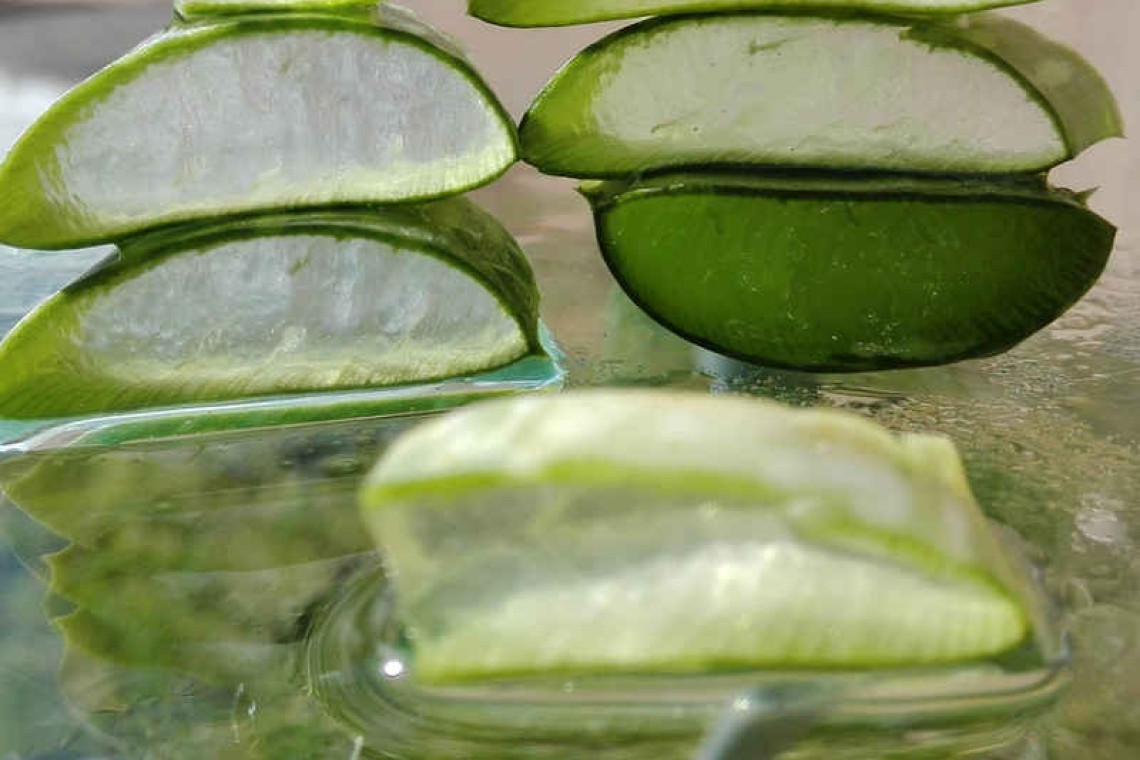By Dr. Colin Michie FRCPCH with Princely Mandizvidza
Aloes are common in St. Maarten and Zimbabwe. Primeval succulents growing in dry places, with fleshy leaves that heal, hydrate and revive. Their botanical richness, used by our ancestors for thousands of years, is yielding surprises.
Aloes are collected in the forest, a school garden or from a household pot-plant. Their leaves are often used to treat wounds, burns, insect bites, scabies or skin infections. With their spikes stripped away, chunks of washed, drained and cooled aloe leaves are remarkably refreshing on the skin. That aloe gel clears acne, as well as itching from psoriasis or eczema; it helps damaged skin in older folk with systemic lupus, leprosy, ulcers or even following radiotherapy. Zimbabwean children know it well as first-line treatment for ringworm, or for dandruff in older adults. Aloes taste bitter, but they are effective for toothache, mouth ulcers and sore gums. Aloe gel soothes haemorrhoids and relieves candidal infections.
Aloes in Africa are used to improve the health of domestic and farmed animals, from chickens to freshwater fish. Their antimicrobial effects remove parasites including protozoans and worms, and treat fevers on Zimbabwean smallholdings. These same powers make aloe useful for embalming, preserving metal treasures or helping extend the shelf lives of fragile soft fruits such as mangoes and strawberries.
As a queen among pampering treatments, allegedly applied by beautiful women through the centuries, aloe helps you shine in different ways. After a swim or workout, it soothes and heals stressed skin. When massaged into your new hairstyle – or for gents, their beards – it is a valuable nocturnal balm. Whether in a landlocked African country or a Caribbean island, these plants are an herbal Swiss army knife, a Rasayana herb, practical and rejuvenating.
Aloe inner leaf gel contains many active compounds, including polysaccharides, flavonoids, phenolic acids, various terpenoids, saponins, salicyclic acid, alkaloids, anthraquinones and vitamins. Through the centuries, this mixture has been harvested, dried and traded. Inside a leaf, their watery gel is surrounded by a layer richer in anthraquinones. The outer leaf and rind contain a medley of defensive substances, including a thick latex, which, unlike the inner gel, may irritate our skin. Commercial aloe preparations differ depending on their source – the Cape aloe from South Africa, once particularly treasured, is not the same as that grown in Curaçao. Just how these differences link to their medicinal powers is not yet clear.
The polysaccharides that make up a great proportion of aloe gel are crucial for these plants to survive in deserts. These same molecules are not just cosmetic, they can be used to manufacture hydrogels that withstand drying, forming scaffolds that can be used to dress burned skin, soothe the jaw after tooth removal or promote cartilage regeneration. They have been used to make novel inks for bioprinting, a technique that allows dressings to be designed and built to prevent infection, reduce scarring and improve the absorption of medications through the skin. Cotton fibres treated with aloe polysaccharides have been woven into fabrics that prevent microbial growth.
Hydrogel dressings can be customised, implanting tiny nanoparticles of metals such as silver or zinc. Metal nanoparticles are increasingly valuable weapons that kill microbes resistant to antibiotics. Aloe hydrogels containing silver can be used as electronic sensors, too – smart dressings – because aloe polysaccharides respond to temperature, humidity and stretching. Manufacturing nanoparticles used to be challenging, typically requiring high temperatures, radiation, chemicals, or combinations of these. However, it has been found that aloes can make nanoparticles at room temperatures – a green, low energy solution. Silver nanoparticles from aloes have a legion of applications, including purifying water supplies. Aloes are opening new horizons in industrial processing!
Aloe anthraquinones that cause the plant’s bitterness are pharmacologically valuable tools. They relieve constipation (as do the anthraquinones in rhubarb and senna). The problem is dosing – aloe preparations vary in their levels of anthraquinones. Anthraquinones are antioxidants, they tackle cancer cells, some viruses and treat autoimmune diseases. They reduce inflammation and blood sugar levels. High doses or prolonged use can be toxic, though, particularly to the liver. Using aloe leaves as an aphrodisiac has highlighted this problem, so caution is necessary. Aloe should not be used during pregnancy, lactation or for infants. Aloe drinks, juices, cocktails and probiotics are checked to ensure their anthraquinone levels are safely below agreed minimal levels.
We shall hear more of these silent, spiky healers in Africa and the Caribbean because they are inspiring advances in different areas of health care. Such metabolite-rich plants are not really herbal simples as they were once known, but herbal complexes. Prospecting and dissecting out their molecular adaptations to dry environments will deliver new, vitalising botanical therapies to help meet future needs.
Princely Mandizvidza teaches at St. Peter Claver Primary School in Mashonaland, Zimbabwe. Dr. Colin Michie specializes in paediatrics, nutrition, and immunology. Michie has worked in the UK, southern Africa and Gaza as a paediatrician and educator and was the associate Academic Dean for the American University of the Caribbean Medical School in Sint Maarten a few years ago.







